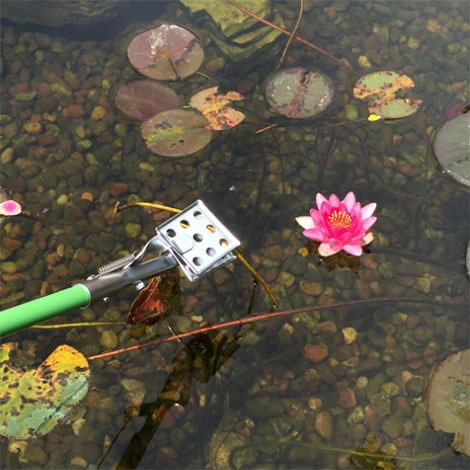Asked By: Bonnie, Dover, NJ
A: You've been watching your aquatic plants flourish all year. Your water lilies and hyacinth put off big blooms, your irises and cattails became homes for frogs and dragonflies, and your submerged plants provided a home for your fish and snails.
With the cold weather on its way, now what do you do with them? Well, it all depends on where you live and what types of plants you have.
In the Zone
What's your hardiness zone? The USDA Plant Hardiness Zone Map will help you determine which plants will thrive in a particular location. The map is based on the average annual minimum winter temperature, divided into 10-degree Fahrenheit zones.
In general, if you live in a hardiness zone that's frost-free, congratulations! All you need to do is trim away dead foliage, fertilize the plants as necessary and enjoy them all year round.
If you live in an area that freezes, however, you have some work to do.
Like terrestrial plants, aquatic plants – whether floating, marginal or submerged – are sensitive in varying degrees to freezing temperatures. Some species will overwinter just fine in frostier hardiness zones, while others will wilt and die at the slightest hint of ice.
So before you do anything, get to know your plants and identify which ones are in your zone and which ones aren't.
Overwintering Your Plants
Winter care of water lilies, marginal/bog plants and submerged plants will depend on if they're tropical (anything that likes temperatures above your hardiness zone) or hardy (anything geared for temperatures in your hardiness zone or lower).
- Tropical Plants: These sensitive beauties, including tropical water lilies and canna, will need to be removed from the pond and replaced next season, or removed and relocated to a warm indoor space for winter.
- Hardy Plants: These easy-care troopers, including hardy water lilies and submerged plants, only need to have dead foliage removed after the first hard frost. Simply use your AquaGloves and pond scissors to trim away any spent leaves, lily pads or flowers. Once trimmed, sink the plants to the deepest part of your pond. Hardy plants will go dormant for the winter and regrow in the spring.
Floating plants, like hyacinth and water lettuce, can be treated like an annual; they will die over the winter, so remove them from your pond once they begin to yellow. Luckily, they're inexpensive to replace and will grow quickly once re-added. Please note: hyacinth and water lettuce can be invasive so be sure to dispose of them properly and never release into public water.
Good luck caring for your first winter pond!

